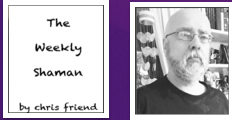
People normally don’t associate fairies with spirits of the dead, but in much of folklore they are connected, if not the exact same thing The belief that the dead can rise and come back to haunt the lining is an almost universal concept. In some circumstances fairies were believed to be both ghosts and members of the fey. In Celtic countries the shades of dead Druids were believed to return as fairies. If souls were not evil enough for Hell or good enough for Heaven, they could come back as fairies. In many parts of Europe, the souls of unbaptized babies, suicides, murder victims, and women who died in childbirth could return as ghostly fairies.
Occasionally the fairy would be the soul of a dead servant. The Irish felt that friendly fairies were often ghosts of dearly departed friends, and that bad ones might be the spirits of those who were enemies in life. In some tales of the supernatural fairies are almost interchangeable with ancestral spirits, as the original version of Cinderella would suggest. In the earlier version the fairy godmother was actually the ghost of Cinderella’s dead mother. Mortals who managed to visit Fairy Land and escape often reported that they saw many of their ancestral ghosts living there. Some of these stories suggest a Purgatorial existence; instead of going to Heaven or Hell, the dead souls await reincarnation.
Many of the Halloween ghosts, goblins, and ghouls were almost interchangeable. When the Celts arrived in Great Britain, they saw the impressive Neolithic Mounds and assumed that they were the gateways between the land of the living and realm of the dead. From these Neolithic burial sights came the notion that the dead had connection with the fairy race. This evolved into the practice of leaving offerings for the fairies at the doorways of these mounds at sacred times, with Halloween being the most obvious. The Christianized version became the folk belief in ghosts leaving Purgatory at certain dates, notably Halloween. During the Christian era, beliefs in fairies and their connection to the dead fell out of favor and altered into Purgatory, Limbo, and visitation by Christian ghosts longing for prayers from their families and friends.
In certain folklore fairies and ghosts are separate beings, but with fairies existing as intermediaries between mortals and their ancestral spirts. One can understand the desire to believe the dearly departed are always nearby in one form or another. Often, it was simply too difficult to believe that the ghosts of beloved predecessors were burning in Hell, so these beliefs came as a reassurance for those left behind.
